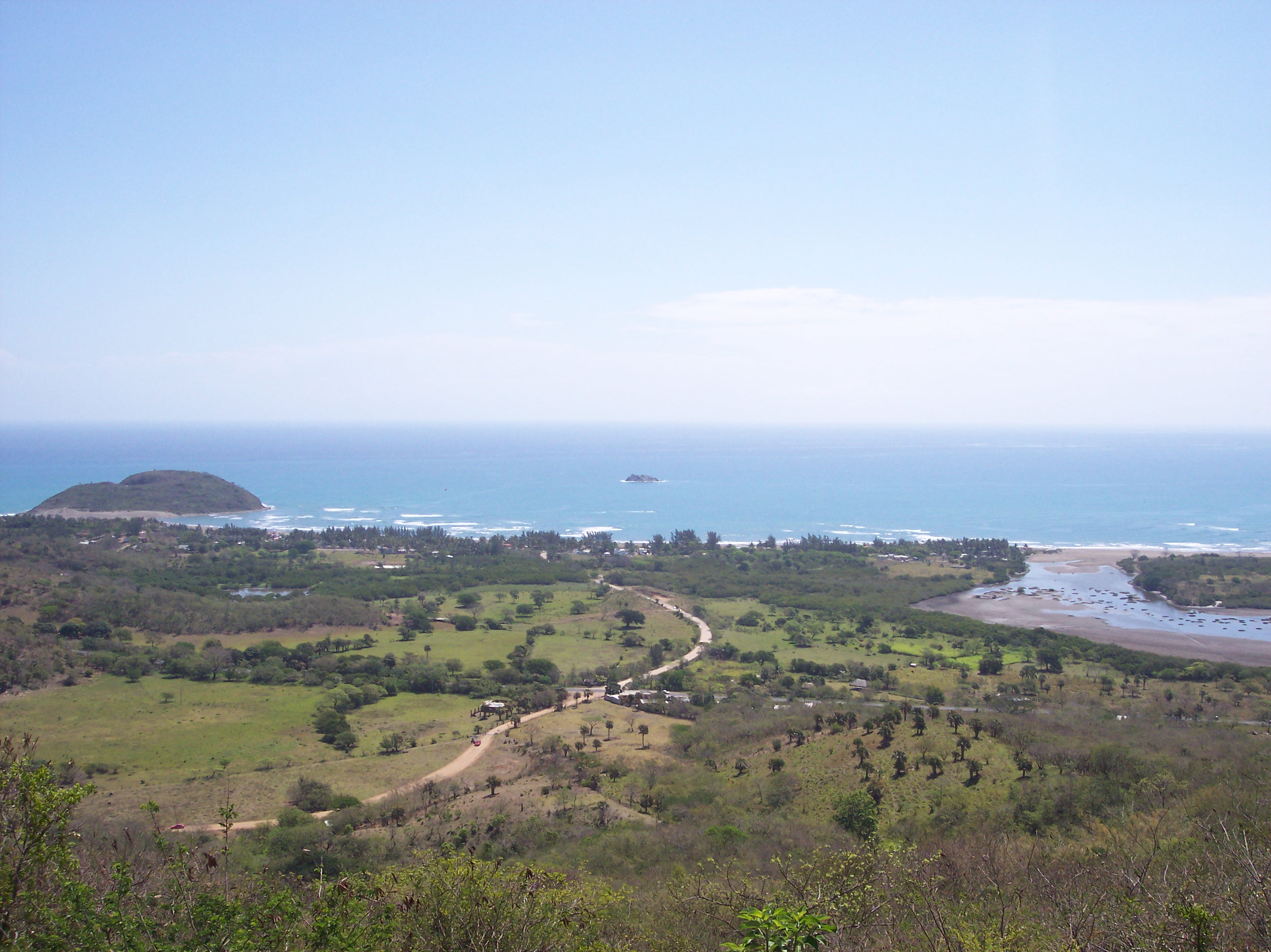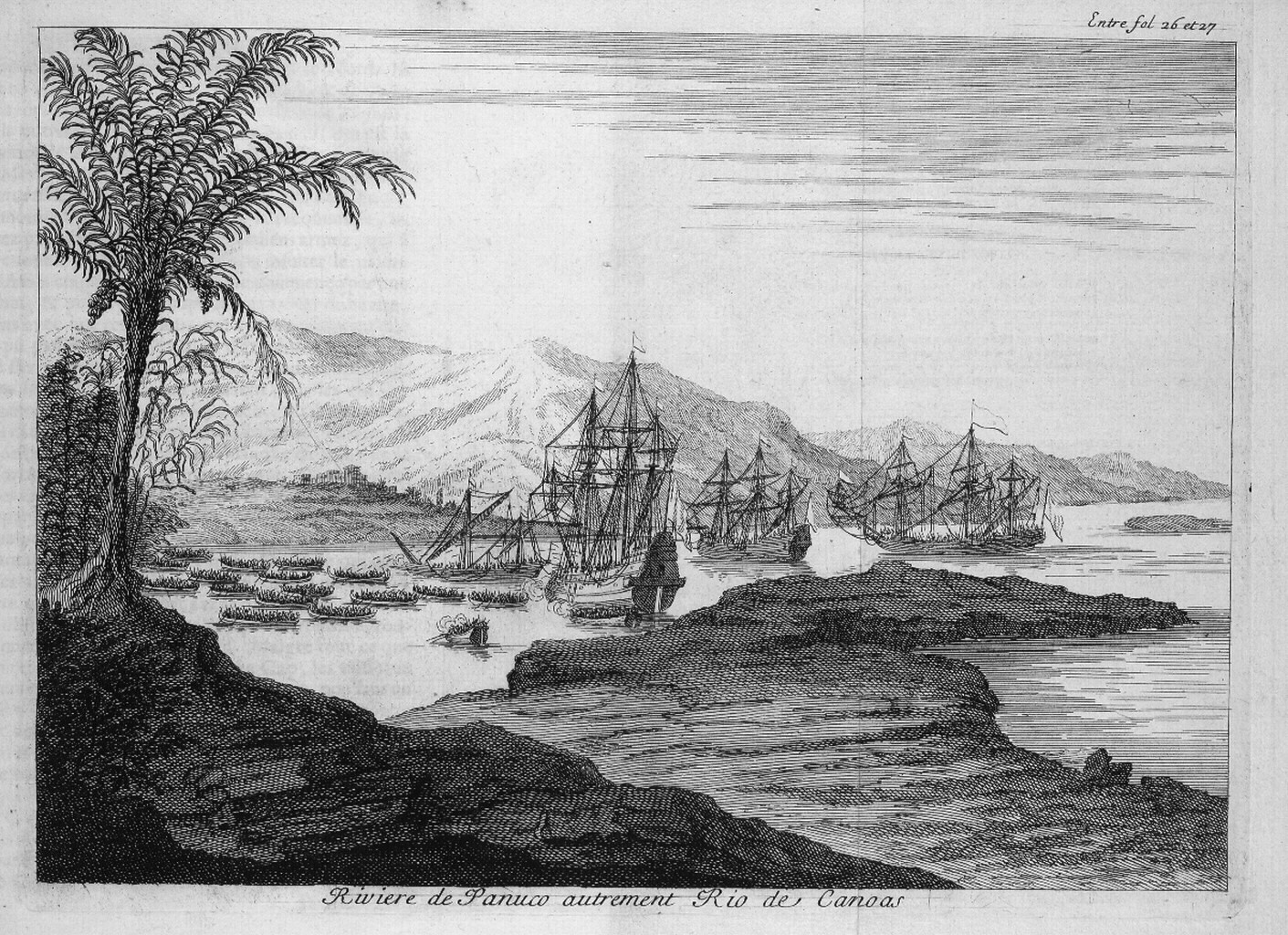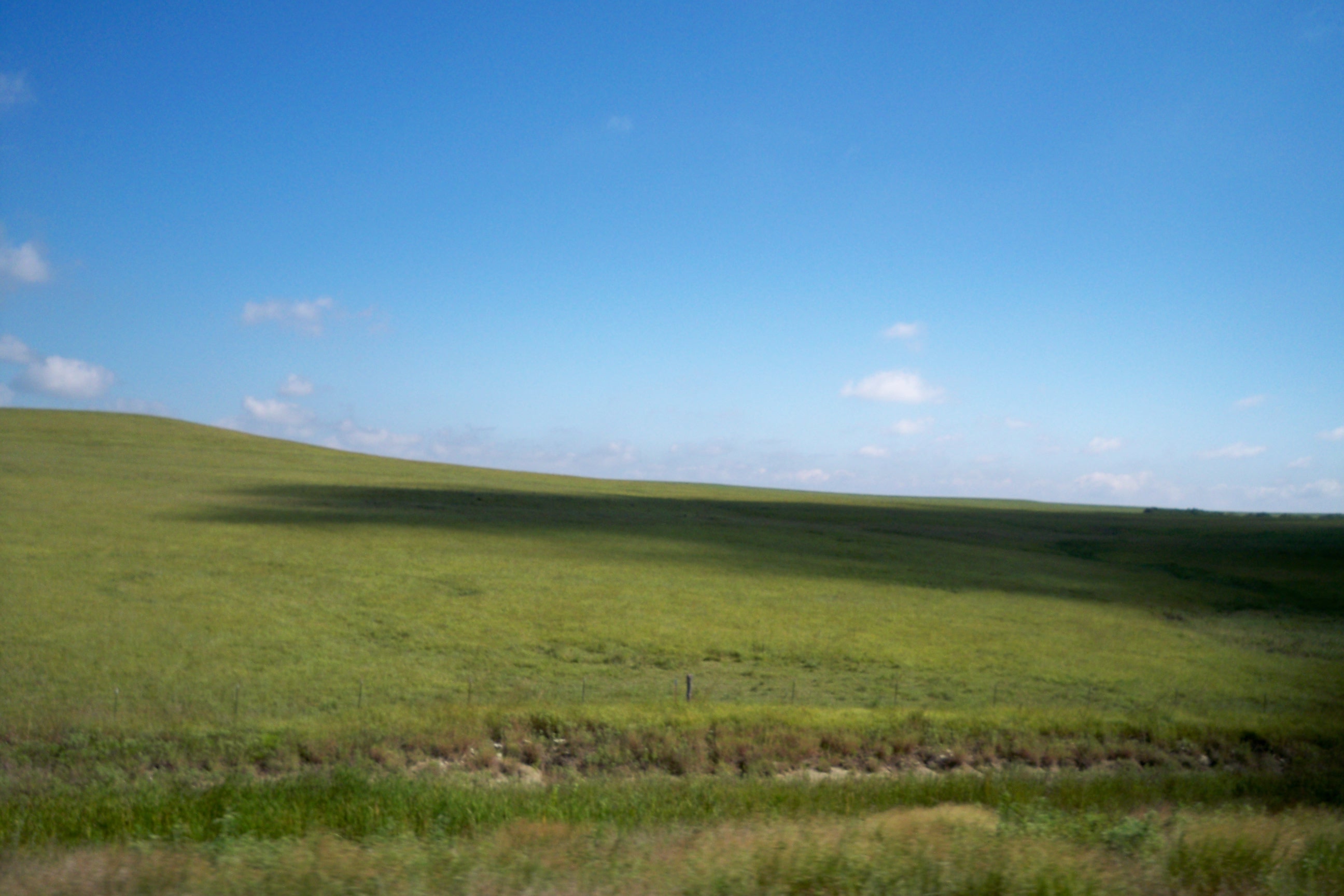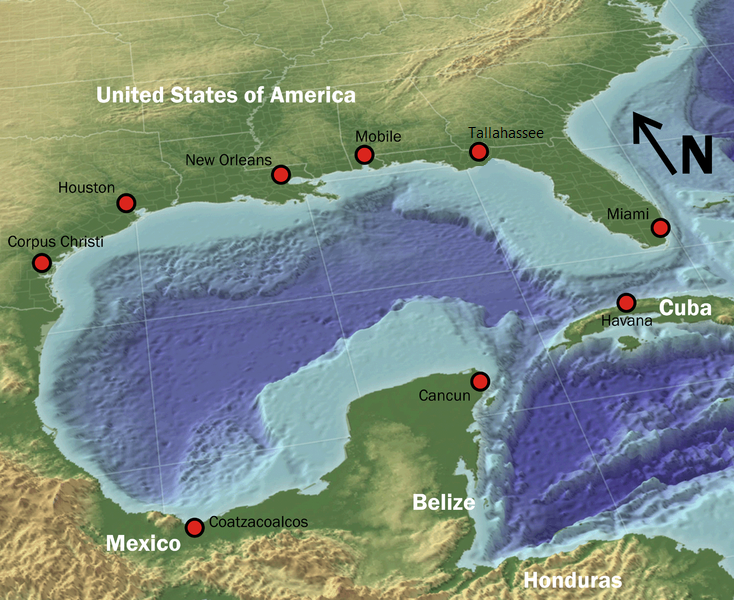|
Tampaón River
The Tampaón River, also known as the Tamuin River, is a river in northeastern Mexico. It is a principal tributary of the Pánuco River, draining portions of San Luis Potosí Guanajuato, Querétaro, and Veracruz states. It is formed by the confluence of the Santa Maria River and the Rio Verde, which originate on the Mexican Plateau and flow through canyons in the Sierra Madre Oriental. The rivers join in the Sierra to form the Tampaón and it continues east, emerging onto the Gulf Coastal Plain The Gulf Coastal Plain extends around the Gulf of Mexico in the Southern United States and eastern Mexico. This coastal plain reaches from the Florida Panhandle, southwest Georgia (U.S. state), Georgia, the southern two-thirds of Alabama, over m ..., where it is joined by tributaries that drain the wetter eastern slopes of the Sierra Madre. It winds eastwards to join the Moctezuma River and form the Pánuco River in Veracruz state.Hudson, Paul F. (2000) "Discharge, Sediment, and ... [...More Info...] [...Related Items...] OR: [Wikipedia] [Google] [Baidu] |
States Of Mexico
A Mexican State (), officially the Free and Sovereign State (), is a constituent Federated state, federative Polity, entity of Mexico according to the Constitution of Mexico. Currently there are 31 states, each with its own constitution, State governments of Mexico, government, Lists of Mexican state governors, state governor, and List of Mexican state congresses, state congress. In the hierarchy of Administrative divisions of Mexico, Mexican administrative divisions, states are further divided into municipalities of Mexico, municipalities. Currently there are 2,462 municipalities in Mexico. Although not formally a state, political reforms have enabled Mexico City (), the capital city of the Mexico, United Mexican States to have a federative entity status equivalent to that of the states since January 29, 2016. Current Mexican governmental publications usually lists 32 federative entities (31 states and Mexico City), and 2,478 municipalities (including the 16 boroughs of Mexico ... [...More Info...] [...Related Items...] OR: [Wikipedia] [Google] [Baidu] |
San Luis Potosí
San Luis Potosí, officially the Free and Sovereign State of San Luis Potosí, is one of the 32 states which compose the Federal Entities of Mexico. It is divided in 59 municipalities and is named after its capital city, San Luis Potosí. It is located in eastern and central Mexico and is bordered by seven other Mexican states: Nuevo León to the north; Tamaulipas to the north-east; Veracruz to the east; Hidalgo, Querétaro and Guanajuato to the south; and Zacatecas to the north-west. In addition to the capital city, other major cities in the state include Ciudad Valles, Matehuala, Rioverde, and Tamazunchale. History In pre-Columbian times, the territory now occupied by the state of San Luis Potosí contained parts of the cultural areas of Mesoamerica and Aridoamerica. Its northern and western-central areas were inhabited by the Otomi and Chichimeca tribes. These indigenous groups were nomadic hunter-gatherers. Although many indigenous people died during Spanish colon ... [...More Info...] [...Related Items...] OR: [Wikipedia] [Google] [Baidu] |
Veracruz
Veracruz, formally Veracruz de Ignacio de la Llave, officially the Free and Sovereign State of Veracruz de Ignacio de la Llave, is one of the 31 states which, along with Mexico City, comprise the 32 Political divisions of Mexico, Federal Entities of Mexico. Located in eastern Mexico, Veracruz is bordered by seven states, which are Tamaulipas, San Luis Potosí, Hidalgo (state), Hidalgo, Puebla, Oaxaca, Chiapas, and Tabasco. Veracruz is divided into Municipalities of Veracruz, 212 municipalities, and its capital city is Xalapa, Xalapa-Enríquez. Veracruz has a significant share of the coastline of the Gulf of Mexico on the east of the state. The state is noted for its mixed ethnic and indigenous populations. Cuisine of Veracruz, Its cuisine reflects the many cultural influences that have come through the state because of the importance of the port of Veracruz (city), Veracruz. In addition to the capital city, the state's largest cities include Veracruz, Coatzacoalcos, Córdoba, V ... [...More Info...] [...Related Items...] OR: [Wikipedia] [Google] [Baidu] |
Santa Maria River (San Luis Potosi)
The Santa Maria River is a river in Mexico. It originates on the Mexican Plateau in the states of San Luis Potosí and Guanajuato, and flows westwards. For much of its length, it forms the border between San Luis Potosí and Guanajuato. It carves a canyon through the Sierra Madre Oriental, where it is joined by the Rio Verde. The Gallinas River merges into it via the 105-meter Tamul Waterfall, downstream of which its name changes to the Tampaón River. The Tampaón continues westwards to join the Moctezuma River and form the Pánuco River, which empties into the Gulf of Mexico at Ciudad Madero. See also *List of rivers of Mexico This is a list of rivers of Mexico, listed from north to south. There are 246 rivers on this list. Alternate names for rivers are given in parentheses. Rivers flowing into the Gulf of Mexico *Rio Grande, Río Bravo, the name of the Rio Grande in ... References *Atlas of Mexico, 1975 (http://www.lib.utexas.edu/maps/atlas_mexico/river_basins.jpg). *Th ... [...More Info...] [...Related Items...] OR: [Wikipedia] [Google] [Baidu] |
Rio Verde (San Luis Potosi)
Rio Verde, Río Verde, or Rioverde (''green river'') may refer to: Municipalities Brazil * Rio Verde, Goiás * Lucas do Rio Verde * Conceição do Rio Verde * Rio Verde de Mato Grosso Ecuador * Río Verde Canton * Rioverde, Ecuador Other places * Río Verde Quila Quila Canton, Chayanta Municipality, Bolivia * Río Verde, Chile * Rioverde, San Luis Potosí, Mexico * Rio Verde, Arizona, United States Rivers Brazil * Rio Verde (Bahia) * Rio Verde (Das Almas River tributary) * Rio Verde (Das Bois River) * Rio Verde (Grande River tributary) * Rio Verde (Guaporé River tributary, Mato Grosso) * Rio Verde (Guaporé River tributary, Rondônia) * Rio Verde (Jamari River tributary) * Rio Verde (lower Paranaíba River tributary) * Rio Verde (Maranhão River tributary) * Rio Verde (Mato Grosso do Sul) * Rio Verde (Piquiri) * Rio Verde (Sacre River tributary) * Rio Verde (São Paulo) * Rio Verde (Sapucaí) * Rio Verde (Teles Pires tributary) * Rio Verde (Tocantins) * Rio Verde ( ... [...More Info...] [...Related Items...] OR: [Wikipedia] [Google] [Baidu] |
Moctezuma River
The Moctezuma River (Río Moctezuma) is a river in Mexico that drains the eastern side of the Trans-Mexican Volcanic Belt (Sierra Nevada). It is a tributary of the Pánuco River and flows through the Mexican states of Hidalgo, Querétaro, and San Luis Potosí. Course The Moctezuma arises in the Zimapán Dam, this reservoir is formed by the Tula and San Juan rivers which join in the reservoir to form the Moctezuma River later downstream of the dam. The Zimapán Dam, is a hydroelectric dam about 15 km southwest of the town of Zimapán. At Tamazunchale it receives the Amajac River. Below the town of Tanquián de Escobedo it forms the border between the states of San Luis Potosí and Veracruz. It receives the Tempoal River at El Higo. It ends at its confluence with the Tamuín River (Tampaón River) where together they form the Pánuco River. See also * *List of rivers of Mexico This is a list of rivers of Mexico, listed from north to south. There are 246 rivers on this ... [...More Info...] [...Related Items...] OR: [Wikipedia] [Google] [Baidu] |
Pánuco River
The Pánuco River (, ), also known as the ''Río de Canoas'', is a river in Mexico fed by several tributaries including the Moctezuma River and emptying into the Gulf of Mexico. The river is approximately long and passes through or borders the states of Mexico, Hidalgo, Querétaro, San Luis Potosí, Tamaulipas, and Veracruz. According to the ''Atlas of Mexico'', it is the fourth-largest river in Mexico by volume of runoff, and forms the sixth-largest river basin in Mexico by area. The Pánuco is formed by the confluence of its two main tributaries, the Moctezuma River, Moctezuma and the Tampaón (or Tamuín). The Moctezuma originates on the Mexican Plateau, and its headwater streams include the Tula River. It runs northward, forming the state border between Hidalgo and Querétaro as it moves toward San Luis Potosí, before turning eastward to carve a deep canyon through the Sierra Madre Oriental. Once emerging onto the Gulf Coastal Plain, it runs northeastwards, joined fr ... [...More Info...] [...Related Items...] OR: [Wikipedia] [Google] [Baidu] |
Guanajuato
Guanajuato, officially the Free and Sovereign State of Guanajuato, is one of the 32 states that make up the Political divisions of Mexico, Federal Entities of Mexico. It is divided into Municipalities of Guanajuato, 46 municipalities and its capital city is Guanajuato, Guanajuato, Guanajuato. It is located in central Mexico and is bordered by the states of Jalisco to the west, Zacatecas to the northwest, San Luis Potosí to the north, Querétaro to the east, and Michoacán to the south. It covers an area of . The state is home to several historically important cities, especially those along the "Bicentennial Route", which retraces the path of Miguel Hidalgo y Costilla's insurgent army at the beginning of the Mexican War of Independence. This route begins at Dolores Hidalgo, and passes through the Sanctuary of Atotonilco, San Miguel de Allende, Celaya, and the capital of Guanajuato City, Guanajuato. Other important cities in the state include León, Guanajuato, León, the state' ... [...More Info...] [...Related Items...] OR: [Wikipedia] [Google] [Baidu] |
Querétaro
Querétaro, officially the Free and Sovereign State of Querétaro, is one of the Political divisions of Mexico, 32 federal entities of Mexico. It is divided into Municipalities of Querétaro, 18 municipalities. Its capital city is Querétaro City, Santiago de Querétaro. It is located in north-central Mexico, in a region known as Bajío. It is bordered by the states of San Luis Potosí to the north, Guanajuato to the west, Hidalgo (state), Hidalgo to the east, State of Mexico, México to the southeast and Michoacán to the southwest. The state is one of the smallest in Mexico, but also one of the most heterogeneous geographically, with ecosystems varying from deserts to tropical rainforest, especially in the Sierra Gorda, which is filled with microecosystems. The area of the state was located on the northern edge of Mesoamerica, with both the Purépecha Empire and Aztec Empire having influence in the extreme south, but neither really dominating it. The area, especially the Sierra ... [...More Info...] [...Related Items...] OR: [Wikipedia] [Google] [Baidu] |
Mexican Plateau
The Central Mexican Plateau, also known as the Mexican Altiplano (), is a large arid-to-semiarid plateau that occupies much of northern and central Mexico. Averaging above sea level, it extends from the United States border in the north to the Trans-Mexican Volcanic Belt in the south, and is bounded by the and to the west and east, respectively. A low east-west mountain range in the state of Zacatecas divides the plateau into northern and southern sections. These two sections, called the Northern Plateau () and Central Plateau (), are now generally regarded by geographers as sections of one plateau. The Mexican Plateau is mostly covered by deserts and xeric shrublands, with pine-oak forests covering the surrounding mountain ranges and forming sky islands on some of the interior ranges. The Mexican Altiplano is one of six distinct physiographic sections of the Basin and Range Province, which in turn is part of the Intermontane Plateaus physiographic division. In phytogeogr ... [...More Info...] [...Related Items...] OR: [Wikipedia] [Google] [Baidu] |
Sierra Madre Oriental
The Sierra Madre Oriental () is a mountain range in northeastern Mexico. The Sierra Madre Oriental is part of the American Cordillera, a chain of mountain ranges (cordillera) that consists of an almost continuous sequence of mountain ranges that form the western "backbone" of North America, Central America, South America, and Antarctica. Setting Spanning the Sierra Madre Oriental runs from the Rio Grande on the border between Coahuila and Texas south through Nuevo León, southwest Tamaulipas, San Luis Potosí, Querétaro, and Hidalgo to northern Puebla, where it joins with the east-west running Eje Volcánico Transversal of central Mexico. The northernmost are the Sierra del Burro and the Sierra del Carmen which reach the border with the United States at the Rio Grande. North of the Rio Grande, the range continues northwestward into Texas and beyond as the Davis and Guadalupe Ranges. Mexico's Gulf Coastal Plain lies to the east of the range, between the mountains and the ... [...More Info...] [...Related Items...] OR: [Wikipedia] [Google] [Baidu] |
Gulf Coastal Plain
The Gulf Coastal Plain extends around the Gulf of Mexico in the Southern United States and eastern Mexico. This coastal plain reaches from the Florida Panhandle, southwest Georgia (U.S. state), Georgia, the southern two-thirds of Alabama, over most of Mississippi, western Tennessee and Kentucky, extreme southern Illinois, the Missouri Bootheel, eastern and southern Arkansas, all of Louisiana, the southeast corner of Oklahoma, and easternmost Texas in the United States. It continues along the Gulf in northeastern and eastern Mexico, through Tamaulipas and Veracruz to Tabasco and the Yucatan Peninsula, Yucatán Peninsula on the Bay of Campeche. Geography The Gulf Coastal Plain's southern boundary is the Gulf of Mexico in the U.S. and the Sierra Madre de Chiapas in Mexico. On the north, it extends to the Ouachita Mountains, Ouachita Highlands of the Interior Low Plateaus and the southern Appalachian Mountains. Its northernmost extent is along the Mississippi embayment (Mississippi ... [...More Info...] [...Related Items...] OR: [Wikipedia] [Google] [Baidu] |






